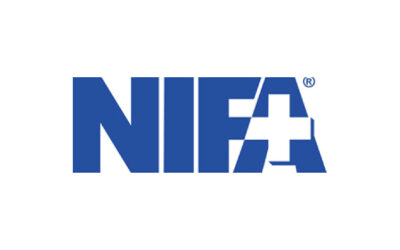
By Amy Antonacci, MSN, RN
A community hospital patient preparing for elective orthopedic surgery was seen in the perioperative clinic. The pre-anesthesia evaluation with evidence-based treatment protocols included EKG testing and high sensitivity troponin labs based on the patient’s history and presentation. Test results were abnormal and warranted immediate action. Rather than the elective procedure, the patient was admitted for urgently needed open heart surgery.
An ASC included the STOP-Bang questionnaire in its pre-anesthesia evaluation to identify cases with undiagnosed obstructive sleep apnea (OSA). The anesthesia team refines its treatment and post-procedure monitoring plan for every patient with positive screening.[1]
More than checking a box
A pre-anesthesia evaluation is a CMS requirement for hospitals (at CFR §482.52(b)(1)) and ambulatory surgery centers (at CFR §416.42(a)(1)(ii)).
Specific requirements dictate who can complete the evaluation, when it must be completed, and what elements must be included. Hospitals and ASCs have the opportunity to go beyond meeting the technical aspects of these requirements; they can use what is required as a springboard for a comprehensive, standardized approach to completing an evaluation of each pre-surgical patient that effectively manages risk for the patient and the organization.
Organizations that embrace both the letter and the spirit of the pre-anesthesia evaluation are doing more than complying with regulatory expectations. They are demonstrating a proactive culture of safety.
What and when to evaluate
Some components of the assessment may be completed up to 30 days before the scheduled surgery.
These elements must be reviewed and updated within 48 hours of the procedure, but the extended 30-day window of time affords the anesthesiologist, the proceduralist, and other members of the care team time to complete a thorough evaluation of the patient. Evidence-based risk assessment tools (like STOP-Bang) are widely available and can be included to further stratify overall perioperative risk of morbidity and mortality. As an accreditation organization, ACHC encourages clients to develop standardized assessment processes that include review of cardiac, respiratory and endocrine risks. The 30-day window allows for:
- Notation of anesthesia risk according to established standards of practice (e.g., ASA classification of risk).
- Identification of potential problems related to anesthesia administration, particularly those that may suggest a risk of complications or contraindications to the planned procedure (e.g., difficult airway, ongoing infection, limited intravascular access).
- Gathering and analyzing additional relevant data or information, as required by standard practice for anesthesia or organizational policy (e.g., stress tests, additional specialist consultation).
- Development of an individualized plan of care, including the type of medications used for induction, maintenance, and post-operative care.
- Meaningful discussion with the patient (or their representative) about the risks and benefits of anesthesia, using simple language in the patient’s preferred language.
Other opportunities include assessment of: cardiac risk, frailty, allergies and complicated medication regimes that may include anti-coagulants, blood pressure medications and insulin.[2] Risk stratification and standardized processes allow for appropriate recommendations for additional testing such as a 12-Lead EKG and lab tests.[3] During an early assessment, providers may learn that their patient has a cardiac history, but hasn’t followed-up with their cardiologist in years. Other patients with a history of diabetes may be identified as having elevated hemoglobin A1C indicating poor glucose control. These findings present opportunities for the anesthesia team to request additional evaluation by the specialists who manage these shared patients.
This approach to a comprehensive evaluation allows the anesthesiologist and their team an in-depth understanding of each patient’s overall health status and the opportunity to mitigate risk through pre-operative optimization and anesthesia plans that are tailored to each patient and their health status.
Then, because things change, another pre-anesthesia evaluation must be completed within 48 hours of the procedure. Elements that must be performed within this time frame include:
A review of the patient’s medical history, including anesthesia and drug or material allergies or reactions.
An interview and examination of the patient, if possible, given the patient’s condition.[4]
Act on the Findings
Once the patient assessment is complete, issues identified must be addressed. Outdated evaluations for critical health conditions must be considered. Many anesthesia teams manage perioperative clinics in which the surgeons or proceduralists defer the management of pre-procedural optimization to the clinic/anesthesia department. This partnership approach supports standardization of the process and helps prevent confusion when multiple providers or departments are attempting to coordinate the clearance process. Under this structure, abnormal test results and outdated health assessments are identified and follow-up is coordinated through a central resource. Additional testing or other actions on abnormal results may lead to delays in the scheduled procedure date; coordinating further appointments and testing is not always feasible in a short period of time.
Finally, be sure to document updates to the status of the pre-anesthesia evaluation in the medical record. Documentation is always critical but especially important when information regarding test results and communication from providers is returned from a range of sources at different times. Coordination to verify all outstanding results and other pre-operative communications are accounted for ensures that no outstanding results are missed. Anesthesia should review all new results as part of the pre-anesthesia evaluation and incorporate them into the treatment plan.
Communicate and Educate
Through the pre-anesthesia evaluation, the team managing the process has communicated with all key stakeholders, collaborated with the patient’s community-based physicians, and coordinated necessary testing and treatment plans.
Communicate the anesthesia plan to the surgeon and the patient. “Patient” education includes a patient’s support person and is ideally started well before the procedure date with specific instructions to be followed prior to and after the procedure. Instructions, especially related to medications, should be reiterated multiple times and in verbal and written formats as opposed to being new information at the time of consent and discharge.
Yes, the pre-anesthesia evaluation is a requirement. It is clear, though, that organizations can approach it as a task list or look at it as a requirement that tremendously enhances patient safety. When embraced, the pre-anesthesia evaluation can optimize patient safety and improve outcomes for patients during the perioperative period.
Joshi GP, Ankichetty SP, Gan TJ, Chung F. Society for Ambulatory Anesthesia consensus statement on preoperative selection of adult patients with obstructive sleep apnea scheduled for ambulatory surgery.
[1] Anesth Analg. 2012 Nov;115(5):1060-8. doi: 10.1213/ANE.0b013e318269cfd7. Epub 2012 Aug 10. PMID: 22886843.
[2] Makary MA, Segev DL, Pronovost PJ, Syin D, Bandeen-Roche K, Patel P, Takenaga R, Devgan L, Holzmueller CG, Tian J, Fried LP. Frailty as a predictor of surgical outcomes in older patients. J Am Coll Surg. 2010 Jun;210(6):901-8. doi: 10.1016/j.jamcollsurg.2010.01.028. Epub 2010 Apr 28. PMID: 20510798.
[3] Practice Advisory for Preanesthesia Evaluation: An Updated Report by the American Society of Anesthesiologists Task Force on Preanesthesia Evaluation. Anesthesiology 2012; 116:522–538 doi: https://doi.org/10.1097/ALN.0b013e31823c1067
[4] https://www.cms.gov/regulations-and-guidance/guidance/manuals/downloads/som107ap_a_hospitals.pdf









